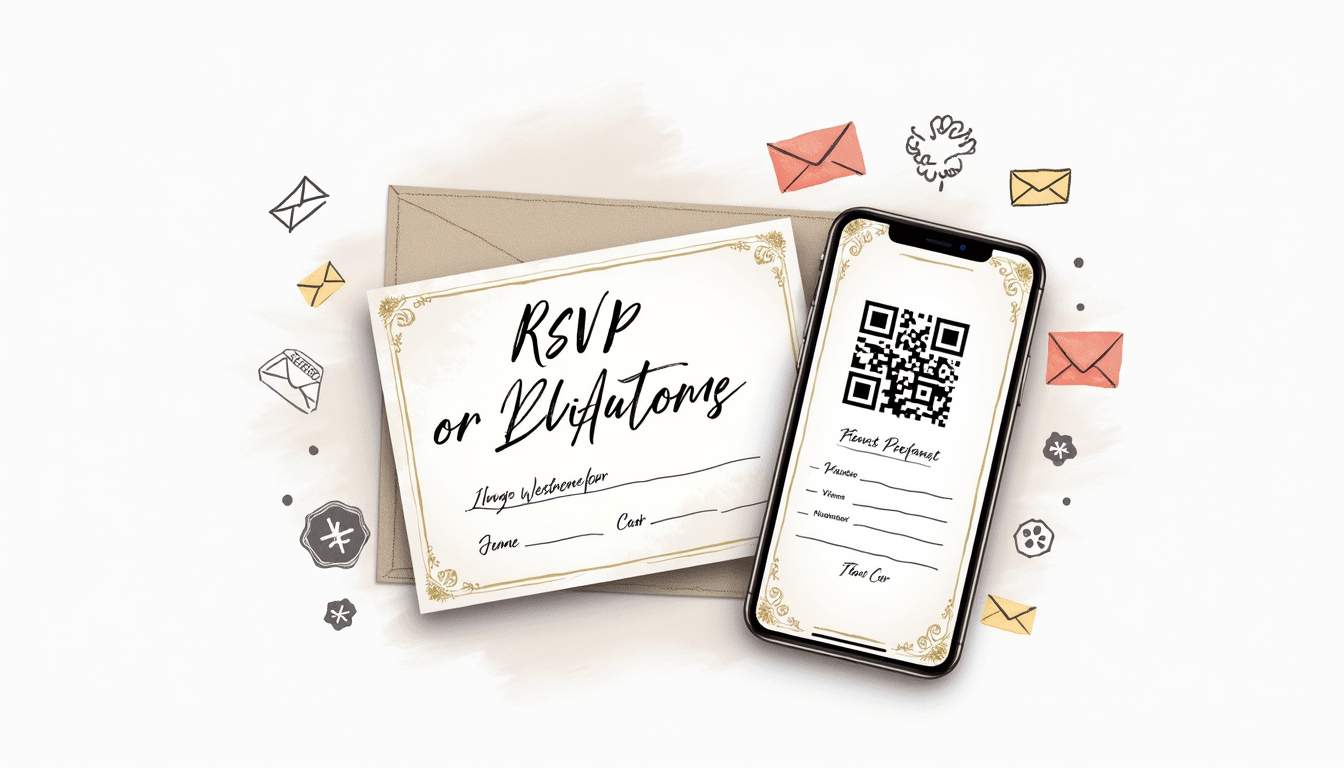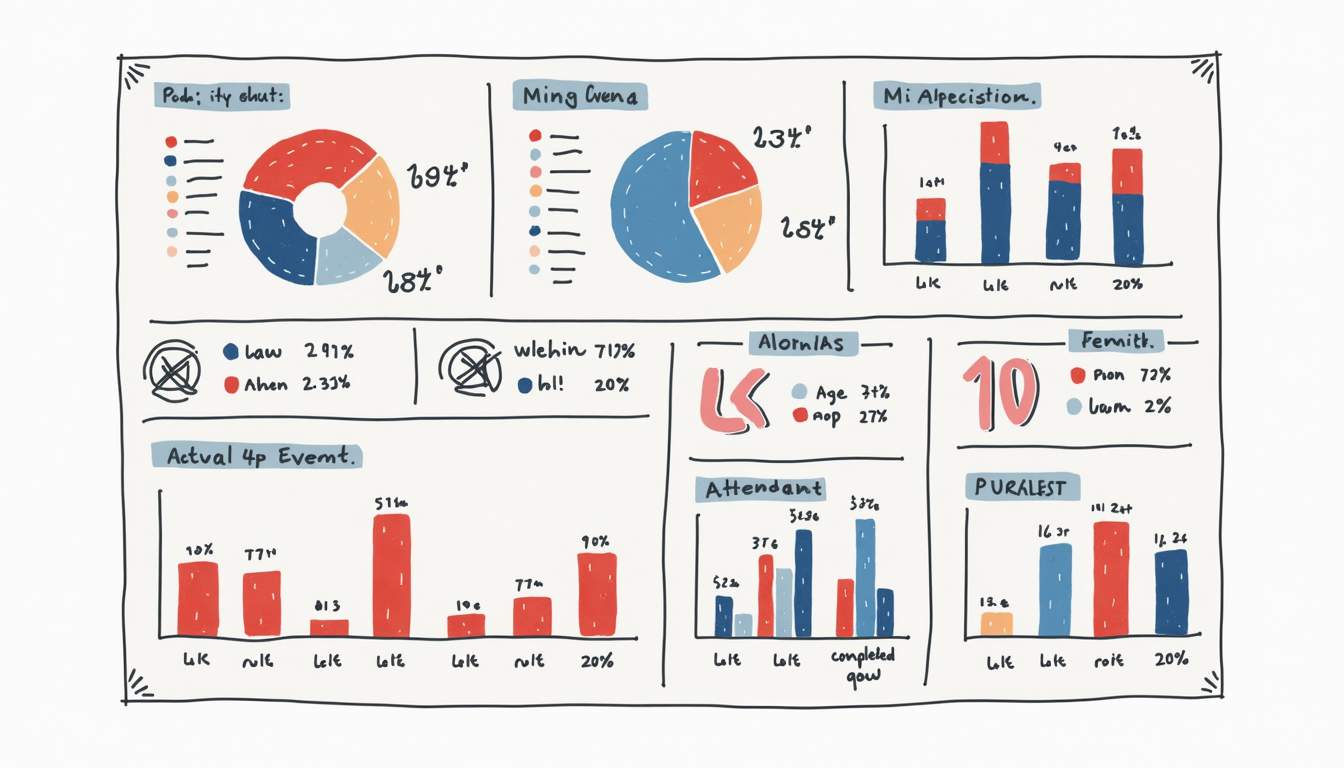
How to Track RSVP Responses for Corporate Events?
Organizing a corporate event requires meticulous planning, and one of the most crucial aspects is tracking RSVP responses. Whether you're planning a product launch, annual gala, or industry conference, knowing exactly who's attending allows you to plan accordingly, allocate resources efficiently, and create a seamless experience for your guests. In this comprehensive guide, we'll explore various methods and tools to effectively track RSVP responses for your next corporate event.
Why Accurate RSVP Tracking Matters
Before diving into the "how," let's understand why proper RSVP tracking is essential for corporate events. Accurate attendance numbers directly impact venue selection, catering orders, seating arrangements, and budget allocation. Without reliable RSVP data, you risk either wasting resources on no-shows or scrambling to accommodate unexpected guests.
Additionally, RSVP tracking provides valuable insights into attendee engagement levels. A high response rate often indicates strong interest in your event, while delayed responses might suggest you need to adjust your communication strategy or event offering to generate more excitement.
The Cost of Poor RSVP Management
The financial implications of inaccurate RSVP tracking can be significant. Consider a corporate dinner where you've paid $150 per plate. If 20 confirmed guests don't show up, that's $3,000 wasted. Conversely, if 20 unexpected guests arrive, you might face uncomfortable situations where there's insufficient food, seating, or event materials.
Beyond the immediate financial impact, poor RSVP management can damage your company's reputation and relationships. Guests who arrive to find inadequate accommodations due to planning oversights will likely remember the negative experience rather than your event's intended message.
The ripple effects of RSVP mismanagement extend to operational efficiency as well. Event staff must scramble to adjust setups, catering teams may need to hastily prepare additional meals (often at premium rush pricing), and your event timeline can be thrown into disarray as you attempt to accommodate unexpected changes. These last-minute adjustments not only create stress for your team but can significantly diminish the polished, professional atmosphere you've worked hard to create.
Furthermore, accurate RSVP data serves as a valuable metric for measuring event ROI and planning future functions. When you can reliably track who accepted, declined, or failed to respond to invitations—and compare this against actual attendance—you gain critical insights into audience segments and engagement patterns. This data becomes particularly valuable for multi-event campaigns or annual functions where historical attendance trends can inform strategic decisions about timing, venue capacity, and resource allocation for upcoming events.
Digital RSVP Tracking Solutions
In today's digital-first world, numerous platforms and tools can streamline your RSVP tracking process. These solutions offer advantages over traditional methods, including real-time updates, automated reminders, and integrated analytics.

Comprehensive event management platforms like Eventbrite, Cvent, and Whova offer end-to-end solutions for corporate events. These platforms typically include customizable registration forms, automated confirmation emails, and detailed attendance dashboards. For instance, Cvent allows you to create branded registration pages where attendees can not only RSVP but also select meal preferences, workshop sessions, and accommodation requirements.
The analytics capabilities of these platforms are particularly valuable for corporate events. You can track registration trends over time, identify which departments or partner organizations have higher response rates, and even analyze which communication channels drive the most registrations.
Form Builders and Survey Tools
For smaller events or organizations with limited budgets, form builders like Google Forms, Typeform, or JotForm provide cost-effective RSVP tracking solutions. These tools allow you to create customized RSVP forms that feed responses directly into spreadsheets for easy monitoring.
Typeform, for example, offers a particularly engaging user experience with its conversational interface. You can design an RSVP form that feels more like a dialogue than a form, asking questions one at a time and using conditional logic to personalize the experience based on previous answers. This approach can increase response rates while collecting valuable information about attendees.
Email Marketing Platforms
Email marketing tools like Mailchimp, Constant Contact, and HubSpot can be repurposed for RSVP tracking. These platforms allow you to send professionally designed invitation emails with embedded RSVP buttons that track responses automatically. The segmentation capabilities of these tools are particularly useful for corporate events, allowing you to send targeted follow-ups to non-responders or specific attendee groups.
HubSpot, for instance, integrates RSVP tracking with its CRM functionality, giving you visibility into how event attendance correlates with customer relationships and sales opportunities. This integration is especially valuable for corporate events aimed at client engagement or prospect development.
Traditional RSVP Methods with Modern Twists
While digital solutions offer efficiency and scalability, some corporate events still benefit from traditional RSVP methods, especially when targeting executive audiences or hosting formal occasions. However, these traditional approaches can be enhanced with modern tracking systems.

Designating a phone line for RSVP responses adds a personal touch that some executives and VIP guests appreciate. To modernize this approach, consider using a virtual phone system like Google Voice or Grasshopper that can transcribe voicemails and organize contacts. Your event team can then transfer these responses to your central tracking system.
For high-profile corporate events, having staff personally call invitees not only secures RSVPs but also builds anticipation and demonstrates the event's importance. These calls can be logged in your CRM system, creating a record of interactions and responses.
Physical Response Cards with Tracking Codes
For formal corporate galas or award ceremonies, printed invitations with response cards remain a popular choice. To modernize this approach, include unique QR codes or tracking numbers on each response card. When cards are returned, scan the code or enter the tracking number into your digital system to maintain a centralized database.
This hybrid approach preserves the elegance of traditional invitations while providing the data management benefits of digital tracking. Companies like Paperless Post have capitalized on this blend by offering digital invitations that mimic the experience of opening a physical envelope, combined with robust tracking features.
Creating an Effective RSVP Tracking System
Regardless of which tools you choose, certain principles will help you create an effective RSVP tracking system for your corporate event.
Centralize Your Data
Even if you're collecting RSVPs through multiple channels, ensure all responses feed into a single database or spreadsheet. This centralization prevents double-counting and gives you a clear picture of your attendance numbers. Many organizations use Microsoft Excel or Google Sheets as their central repository, with team members updating in real-time as responses come in.
For larger events, consider using project management tools like Asana or Trello to track not just RSVPs but also related follow-up tasks. For example, you might create an automated workflow where a confirmed RSVP triggers tasks like preparing personalized welcome materials or arranging special accommodations.
Implement a Coding System
Develop a simple coding system to track the status of each invitee. Beyond basic "attending" or "not attending" categories, consider tracking "tentative," "waitlisted," or "needs follow-up" statuses. Color-coding these categories in your spreadsheet provides a quick visual reference of your attendance outlook.
For corporate events with multiple segments (like a conference with an optional gala dinner), your coding system should track attendance for each component separately. This granular tracking helps with planning specific elements of your event.
Set Up Automated Reminders
Busy professionals often need reminders about upcoming events. Configure your tracking system to automatically send reminder emails or text messages at strategic intervals—perhaps two weeks, one week, and two days before the event. These reminders should include a clear call to action for those who haven't yet responded.
Tools like Zapier can help create automation workflows between your RSVP tracking system and communication platforms. For example, you might set up a Zap that automatically sends a text reminder via Twilio to anyone who hasn't responded within a certain timeframe.
RSVP Assistant Service
Hire RSVP Assistant service Lindy (easy and quick rsvp method) to take the stress out of tracking responses. This professional service manages all aspects of your guest list, from sending invitations to compiling responses, making it effortless to keep track of who's attending your corporate event. With automated tracking, detailed analytics, and professional management, you can focus on delivering a successful business event while ensuring accurate attendance tracking.
Advanced RSVP Tracking Strategies
For complex corporate events, consider these advanced strategies to enhance your RSVP tracking process.
Tiered Registration Approaches
For events with limited capacity, implement a tiered registration system. Start by inviting your most important stakeholders with an exclusive early registration period. As these RSVPs come in, you can open registration to broader groups while maintaining control over attendance numbers.
This approach is particularly effective for corporate events where certain attendees (like major clients or senior executives) must be accommodated. Your tracking system should note which tier each registrant belongs to, allowing you to prioritize accordingly if you approach capacity limits.
Predictive Analytics for No-Show Rates
Over time, collect data on the relationship between RSVPs and actual attendance. Many corporate events experience predictable no-show rates—often between 10-30% depending on factors like weather, timing, and attendee demographics. By analyzing historical patterns, you can make more accurate predictions about actual attendance.
Some organizations deliberately overbook their events based on predicted no-show rates, similar to how airlines overbook flights. While this strategy requires careful management, it can help maximize attendance and resource utilization.
Post-Event RSVP Analysis
After your event concludes, your RSVP tracking data becomes a valuable resource for future planning.

Compare your final RSVP list against actual attendance, which you can track through check-in systems, badge scans, or manual headcounts. This reconciliation helps you identify patterns in no-shows or unexpected attendees, informing your planning for future events.
For recurring corporate events, maintain a database of attendance patterns by department, seniority level, or geographic location. This information can help you refine your invitation strategy and attendance projections over time.
Response Rate Analysis
Analyze which invitation methods and follow-up strategies yielded the highest response rates. Perhaps email invitations worked well for middle management, while personal phone calls were more effective for C-suite executives. Use these insights to optimize your approach for future events.
Additionally, examine response timing to determine the optimal invitation lead time for your audience. If most registrations occurred within 48 hours of sending reminders, you might adjust your communication schedule accordingly for your next event.
Effective RSVP tracking combines the right tools with systematic processes and thoughtful analysis. By implementing the strategies outlined in this guide, you'll not only streamline your event planning but also enhance the experience for your attendees. Remember that your RSVP system is often your guests' first interaction with your event—making it efficient and professional sets the tone for a successful corporate gathering.